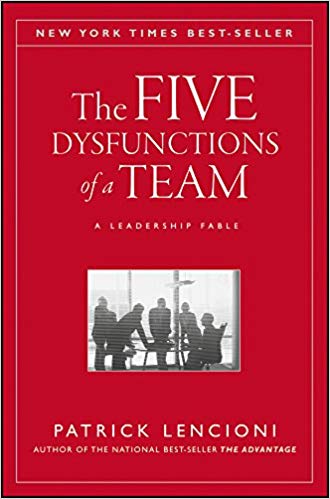

This article is an excerpt from the Shortform summary of "The Five Dysfunctions of a Team" by Patrick Lencioni. Shortform has the world's best summaries of books you should be reading.
Like this article? Sign up for a free trial here .
Does your team or workplace have an inattention to results? Do people just not really care about achieving results? Learn more about how to remove an inattention to results at work.
Dysfunction: What Inattention to Results Is
Functioning teams are focused on achieving results. They have an ultimate mission and clear, defined objectives along the way to help them achieve that mission.
Dysfunctional teams, however, don’t define their goals or establish clear, universal benchmarks for success. They don’t pay attention to results.
This stems directly from the fourth dysfunction: without clear decisions, defined goals, and well-articulated responsibilities for everyone, teammates will be unable and unwilling to hold their teammates accountable to high standards. In the absence of accountability, people will naturally pursue whatever is best for themselves, instead of being accountable for team results.
If individuals know they can get away with blowing off deadlines on team projects without having their feet held to the fire by their colleagues, individual egos will rule the roost. This leads to the team devolving into a collection of individuals working at cross-purposes, rather than a cohesive group working together to achieve common goals.
The effects of inattention to results are crippling for a team. The predominance of individual egos will prevent the team from taking advantage of new opportunities or growing to meet new challenges (because changes to the status quo might impact someone’s status), they will fall behind their competitors (because they haven’t even articulated how they should measure success), and they will easily lose focus as the excessive focus on individual ego and status pulls the organization back and forth between competing priorities.
Inattention to Results Example 1
Kathryn draws the analogy between the DecisionTech executive team and a basketball team with a roster of star players. While on paper, these teams laden with individual talent ought to crush the competition, in reality they frequently don’t. With all of the stars focused on achieving individual records, they don’t pay attention to team results. She points out that a good sports coach can focus a team on results because there is a clear and easy-to-define benchmark: the win-loss record. The key for DecisionTech is to define what “winning” is to them.
Inattention to Results Example 2
Martin becomes defensive when Jan and Carlos point out that the company may have over-committed resources to engineering, while under-investing in marketing and sales. He ultimately admits he has overstated the resources needed to build the company’s core technology because he doesn’t want DecisionTech’s potential failure to be blamed on his department—not because he thought that this commitment of resources was necessarily in the company’s best interests. He put his pride and ego before the good of the company—a textbook display of inattention to results.
Solving Inattention to Results: Delivering Results
The best way to resolve this dysfunction of Inattention to Results is to define clear goals for the organization and articulate how each individual’s work aligns with these broader goals.
Inattention to Results Solution 1: Public Declaration of Results
Clearly express and publicize results and expectations. This brings clarity, as everyone knows precisely which goals the organization is working toward, and how their work fits into the overall goals.
Inattention to Results Solution 2: Results-Based Rewards
Link rewards to the achievement of specific outcomes, rather than vague behaviors like “working hard” and less useful metrics like hours worked.
This provides a financial incentive to get things done for the team, thus reversing inattention to results. Teams should be cautious about relying too heavily on this approach, since it reduces motivation to a simple function of financial incentives (when, in reality, they’re far more complicated than that).
Inattention to Results Solution 3: The Leader’s Role
A leader needs to make it clear that results, and nothing else, are the sole measurement of success. Those who receive recognition should be those who contribute toward defined objectives. The leader needs to avoid playing favorites and rewarding anything other than results.
Benefits of Solving Inattention to Results
By having tangible measures of success, teams become better able to attract and retain achievement-focused employees. It also becomes easier and more efficient to evaluate performance. Lastly, teams that focus on results avoid the distraction and wasted energy that comes from individual team members pursuing their own agendas at the expense of the team.
———End of Preview———

Like what you just read? Read the rest of the world's best summary of Patrick Lencioni's "Five Dysfunctions of a Team" at Shortform . Learn the book's critical concepts in 20 minutes or less .
Here's what you'll find in our full Five Dysfunctions summary :
- What the Five Dysfunctions are
- Why absence of trust is the fundamental dysfunction
- How to get people to argue the right way
- Strategies and exercises to overcome each dysfunction






